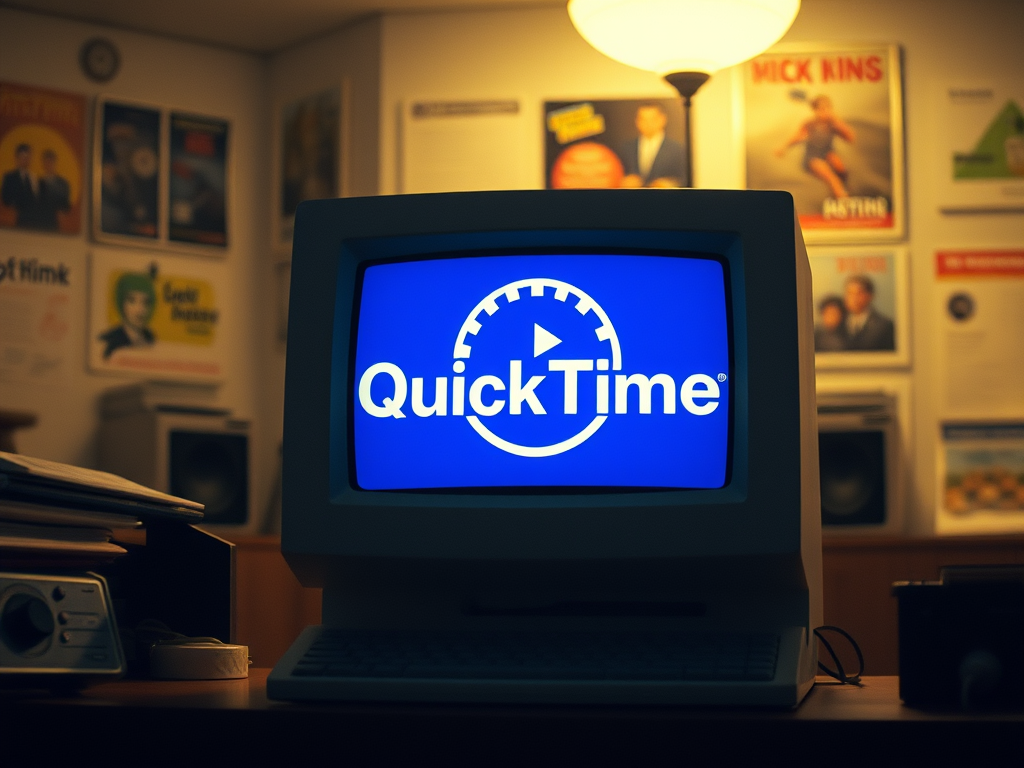Ten Blue Links, "Turn to the left" edition
QuickTime
My first look at QuickTime came before it was publicly released. I was working at Apple in IS&T in 1990, and we had a session one afternoon showing everyone the world of the future. Of course, Knowledge Navigator took pride of place, but also shown off was an early version of a revolutionary new multimedia technology which would allow you to play video, in real time, in colour, on your Mac. QuickTime.
I was also there for the launch of QuickTime 3.0 in 1998, although all I remember of that event was the use of Sarah McLachlan’s Building a Mystery video (possibly one of the most 90s pieces of film ever made).
And, in 2001, on the top floor of the Dennis Publishing office I sat in the corner and tried to work as on screen a postage-stamp sized QuickTime video showed me a live feed of first one then two planes hitting the World Trade Center. A handful of years before the towers had been beacons as a train swung into New York, bringing me from Boston to Manhattan and into the best city in the world for the very first time. Even at QuickTime size, I felt like I was watching a friend take their last breath.
QuickTime, then, is woven through many memories for me. Anyway, Howard Oakley has written a brief history of it, and as a technology it probably deserves more. As a carrier of memory, it definitely means more to me.
2. Go to your room!
Sooner or later, your parents tell you to clean up your room. While Apple is now a middle aged company its recent descent into teenage tantrum behaviour has finally caused the EU to lose patience, ground it, and demand it thinks about its future conduct.
3. Editing vs accreting
Me and John Gruber have our disagreements but I couldn’t agree more with almost everything in his article on the difference between Tim Cook’s Apple and Steve Jobs’ Apple. I would compare Jobs to a brilliant magazine editor, pulling together and inspiring creative people while also editing: taking out what it’s needed to tell the story. Cook, on the other hand, is someone who accretes, who adds on more stuff in order to build.
4. No, Larry, no
Larry Ellison has always had an interesting reputation in Silicon Valley. Extraordinarily rich after Oracle became the data foundation of almost everything in the world, Ellison has a kind of noxiously playful arrogance. One of the most stomach-turning episodes of Walter Isaacson’s Steve Jobs hagiography involves Ellison and Jobs playing a prank call on an Apple fan, first offering him a job, then laughingly turning down the poor sap. It’s gross. And it’s very Ellison.
With great money comes great stupidity, and it’s worth considering that as context when you read about Ellison’s view that pervasive surveillance cameras will bring world peace, or something. A man so divorced from a world which doesn’t involved super yachts, billionaire friends and the ability to buy as many Miata’s as you want (if you know, you know) is not someone that the world should listen to about the future.
5. Where the iPad ends
I don’t think there is a device which divides opinion more than the iPad. I see this in myself: there are days when I absolutely love my iPad Pro and everything that it represents. A device which can transform into anything you want it to be, that’s simple to use, that has a screen which is better than anything you own. And then there are days when I hate it. Not because of how it works, but because the degree of control over the experience of computing which it represents is an antithesis of many of my values.
But. There’s something about it, and I think this archive article by Tim Bajarin from the iPad’s tenth anniversary on the device’s influence is worth reading. How pervasive is the iPad’s influence now? In some senses, the use of ARM and amazing displays which are clearly the direction that computers are going in probably represents its deepest impact so far. Yes, touch screens are common in the Windows world, but slate-style computers haven’t really taken off in the way they should have. I’m still typing this on a Mac, after all.
6. Engagement bait
Been on Threads lately? You’ll have noticed that the main feed is a torrent of engagement bait. Of course you can switch to look at just the people you follow, but Meta makes every effort to pull you back into the “For You” feed, which shows you what appears to be a random mix of stupid questions and inane comments, written by people who pull on engagement like lungs pull on air.
Similarly, anecdote from the blue side of the Meta empire notes the home feed in Facebook is now showing more and more “content” from pages, groups and pretty much anything except the people you want to see: your friends and family, the ones you love, and an occasional cute dachshund.
Why, though? Speculating wildly, I think both Threads and the Facebook home feed represent a desperate bid for novelty. The action in terms of keeping you in touch with the people you’re close to has moved elsewhere, into different kinds of messenger application both private (iMessage, WhatsApp) and semi-public (Telegram). What’s left for Facebook? Pictures of old dogs?
And Threads is attempting to defining itself as “not Twitter”, while also trying to appeal to the same kinds of core influencers – journalists, those who aren’t visual enough for Insta. What better way to win than rigging the game towards a stream of infinite engagement bait?
7. Death to all Word
It’s 11 years since Charlie Stross wrote about how he hated Microsoft Word. It’s still a great read, and Charlie’s point – that until Microsoft Word dies, it’s unavoidable – remains as sound as ever.
8. You put the Lime in the coconut
I love electric bikes. I own one, and it’s got me back into cycling. So I’m in favour of people using them. But… well, is it just me or do techbros ruin everything? In this case, Lime and other e-bike rental companies are essentially creating fat rideable litter across areas to such a degree that local authorities want them banned, and local residents want them crushed. The bikes, not the techbros. Although hey, if that’s what the people want…
9. Fashion
It’s an unlikely thing for a boy from Derby, part of the post-industrial hinterland that is the East Midlands, to love fashion. But I always have. I think it was fashion that first made me love magazines, the heft and visual delight of something like Vogue. When I became an editor of a magazine which, while a tech mag, was also read by a huge number of creative people in design, it was probably the best job I ever had – even if I didn’t know it at the time.
I still love magazines, which is why I absolutely adored “In Vogue: The 90s”, a documentary about the eponymous magazine and the the era that made me. Highly recommended.
10. Art for art’s sake
I spent five years working on a PhD thesis titled The implications of Kant’s philosophy of mind for artificial intelligencein the early 90s, when cognitive science – that blend of philosophy, computing and psychology - was probably at its academic height. But like Kant, my interests in philosophy were broad, and I spent a chunk of my time in both medical ethics and the philosophy of art. The paper I presented to the conservators of the V&A on analogies from principles in medical ethics is long lost, but I’m glad that my comparison of the principle of dignity in death being more important than the relentless preservation of life with conservation of art works didn’t stick too heavily in anyone’s mind.
I’ve realised lately quite how much a blend of technology, art and design has influenced my working practice. I’m not an artist – words are the only medium that I have ever found which I have any talent at – but I love art, and artists, and design, and designers. I love how they see the world.
That’s probably why I love this interview with Jenny Saville much. Saville is one of those artists whose work you would instantly recognise, but whose face you might not remember. And in particular, I love this quote:
When I paint, I don’t search for beauty, but for the power of life’s force: when you fall in love with someone, it's life’s force. When you see amazing food or you listen to music that goes right inside your body, that’s life’s force. That moment is not an intellectual space, it's something beyond – you can't articulate it. It’s about the moments that help you breathe deeper.
That’s a good one to ponder on.

